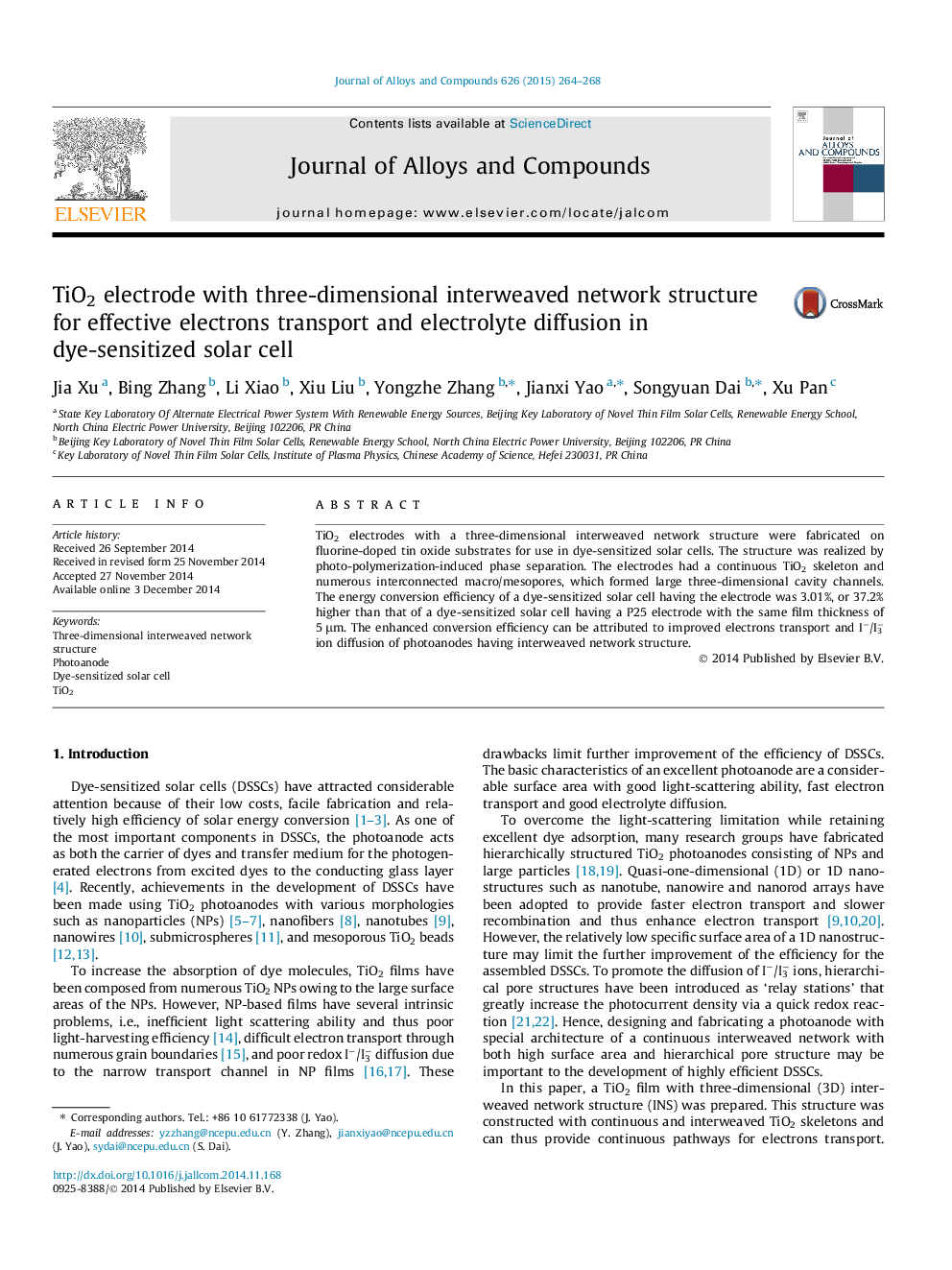| Article ID | Journal | Published Year | Pages | File Type |
|---|---|---|---|---|
| 1610264 | Journal of Alloys and Compounds | 2015 | 5 Pages |
•Photo polymerization induced phase separation method was used to prepare TiO2 films.•TiO2 films with three-dimensional network structure were used as photoanodes.•Energy conversion efficiency was enhanced compared to that of P25 film.•Both electrons transport and ions diffusion were promoted compared to P25 film.
TiO2 electrodes with a three-dimensional interweaved network structure were fabricated on fluorine-doped tin oxide substrates for use in dye-sensitized solar cells. The structure was realized by photo-polymerization-induced phase separation. The electrodes had a continuous TiO2 skeleton and numerous interconnected macro/mesopores, which formed large three-dimensional cavity channels. The energy conversion efficiency of a dye-sensitized solar cell having the electrode was 3.01%, or 37.2% higher than that of a dye-sensitized solar cell having a P25 electrode with the same film thickness of 5 μm. The enhanced conversion efficiency can be attributed to improved electrons transport and I−/I3− ion diffusion of photoanodes having interweaved network structure.
